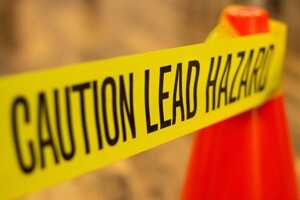
Learning About the Consequences of Lead Exposure
According to a recent article in The New York Times, the city of Flint, Michigan is experiencing a crisis due to the level of lead in its city water supply. While lead exposure in this case is limited geographically to one particular area of the country, it should be a warning to all parents about the serious harms of lead exposure. The article emphasizes that lead exposure during childhood can result in severe and lifelong repercussions. While it is essentially impossible to reverse the damage done by lead exposure, parents can take steps to ensure that their children are not poisoned by the harmful element.
What do you need to know about lead poisoning? The most important piece of information to remember when it comes to lead exposure is that “there is no way of reversing damage done by lead poisoning,” according to the article. As such, we need to do everything we can to avoid lead exposure in the first place. To better understand how to prevent lead poisoning, you should know some of the primary sources of lead in the United States.
The following are common sources of lead exposure:
- Paint in houses that were painted before 1978;
- Soil that has been contaminated with lead;
- Food grown in soil with lead contamination;
- Lead water pipes, through which lead can make its way into a city’s water supply;
- Certain canned goods;
- Imported toys containing lead paint; and
- Certain types of jewelry.
Which of these sources is most likely one in which your child could be exposed? Children are most commonly exposed to lead when they chew on paint containing this substance or inhale dust particles in houses with lead paint. But as the Flint, Michigan crisis makes clear, lead in the water can also lead to irreversible child injuries.
Preventing Lead Poisoning
When children are exposed to lead, it can “have profound effects on the brain and nervous system,” according to the article. Over time, kids who have been exposed to lead can have difficulty concentrating and can have lower intelligence levels than other children in the same age group. As a fact sheet from the Centers for Disease Control and Prevention (CDC) emphasizes, we need to take steps to prevent lead exposure and to properly identify it—and quickly—when it happens. Generally speaking, the CDC recommends that parents take some of the following steps to prevent lead exposure and child injuries:
- Assume a house built before 1978 contains lead paint and take necessary precautions;
- Discuss options with local health officials for testing your home for lead.
- Prevent your child’s access to peeling paint or any surfaces with lead-based paint that could be chewed;
- Wash children’s hands and toys regularly;
- Use wet wipes and a wet mop on floors and window components regularly to remove lead dust;
- Do not let kids play in bare soil; and
If your child was exposed to lead, you may be able to file a claim for compensation. An experienced lead poisoning lawyer can assist you in determining your rights.



